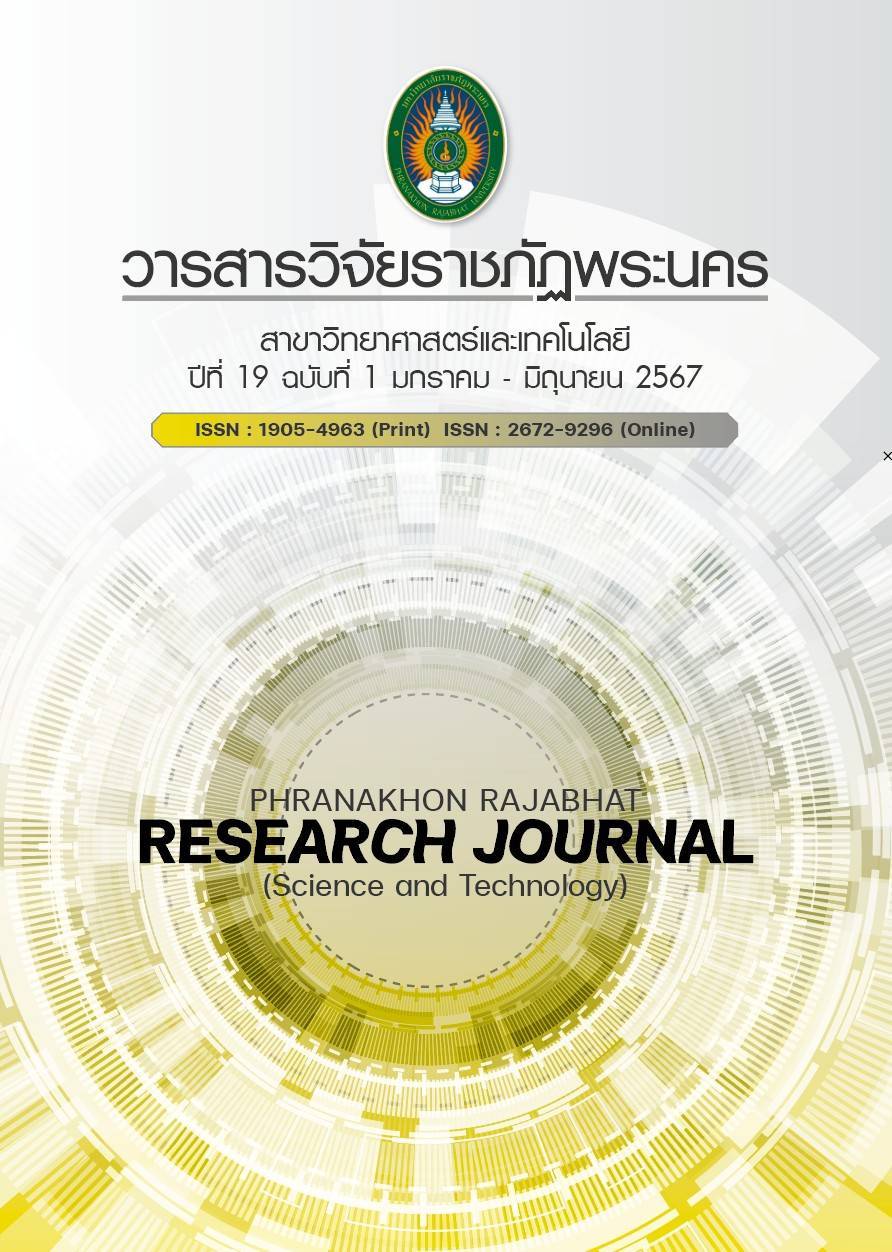ENHANCING THE LIFESPAN AND DURABILITY OF BAMBOO (MAI PAI) IN THAILAND
Keywords:
Bamboo Lifespan Local wisdom, Bambusa bambos bamboo, Rough giant bamboo, Bambusa vulgaris bambooAbstract
The purpose of this study was to identify local knowledge that can be used to treat bamboo
to render it more resistant to fungi, termites, and snout beetles with the ultimate goal of extending its
life, particularly for construction usage. The experimental setup focuses on three species of bamboo (Bambusa bambos bamboo, rough giant bamboo, and Bambusa vulgaris bamboo), three environments
(darkroom (indoor not exposed to light), indoor, and outdoor), and five traditional approaches to
preserve bamboo (allowed to dry naturally, baked without soaking, baked and then soaked in water,
baked and then soaked in saline, and baked and then soaked in wood vinegar). All three species of
bamboo, the treatments used, and the impact of local wisdom were statistically significant at the 0.05
level. To prevent fungal infestation, all three bamboo species were baked and then soaked in water
or saline before being placed in a darkroom or another indoor environment to dry. Only Bambusa
bambos bamboos was found to be suitable for using outdoors. For all three species of bamboo, baking
followed by soaking in wood vinegar was found to provide great results in protection against the
growthof fungus. However, the applied treatments did not yield protection against termites in any
bamboo.The significance level of the finding that baking extends the useful life of bamboo is 0.05.
References
Chewpreecha, B., Chanprasert, K. & Kongpakdee, C. (2016). Diversity, microscopic features and some properties of bamboos in Sakaeo and Prachinburi Province. Department of Biology, Faculty of Science Burapha University. (In Thai)
Dumklang, M., Bunpitak, S. & Tongaroonsri, S. (2020). Development process to improve the durability of bamboo in structure members. Journal of Innovative Technology Research, 4(2), 89–106. (In Thai)
Jing, Y., Qi, C., & Benhua, F. (2022). Different characteristics in the hygroscopicity of the graded hierarchical bamboo structure. Industrial Crops and Products, 176(2), 114333.
Maneeoud, P. (2018). A Creation of bamboo products to add values for namsong community in payuhakiri district, Nakhon Sawan Province. Journal of Community Development Research (Humanities and Social Sciences), 11(3), 102-112. (In Thai)
Palombini, F. L., & Nogueira, F. M. (Eds.). (2023). Bamboo and Sustainable Construction. Springer Nature.
Phuangchik, T. (2013). Is bamboo an amazing plant?. Journal Science and Technology, 21(2): 180-185. (In Thai)
Qiuyi, W., He, H., Zhichao, L., Xin, H., Xue, W., & Yanjun, L. (2022). Surface property enhancement of bamboo by inorganic materials coating with extended functional application. Composites Part A: Applied Science and Manufacturing, 155(5), 106848.
Rakmai, J. (2009). Chemical determinations, antimicrobial and antioxidants activities of Thai wood vinegars. (Master thesis). Prince of Songkla University, Songkla, Thailand.
Su, N., Fang, C., Zhou, H., Tang, T., Zhang, S., & Fei, B. (2021). Hydrophobic treatment of bamboo with rosin. Construction and Building Materials, 271, 121507.
Wessapan, T., Sutthisong, S., Somsuk, N., Hussaro, K. & Teekasap, S. (2013). A development of pyrolysis oven for wood vinegar production. EAU Heritage Journal, 7(1). 50-58.
Yang, X., Huang, Y., Ye, C., Lin, X., Su, N., & Fei, B. (2023). Improving the dimensional stability of round bamboo by environment-friendly modified rosin. Construction and Building Materials, 365, 130078.
Downloads
Published
Issue
Section
License

This work is licensed under a Creative Commons Attribution-NonCommercial-NoDerivatives 4.0 International License.
โปรดกรอกเอกสารและลงนาม "หนังสือรับรองให้ตีพิมพ์บทความในวารสารวิจัยมหาวิทยาลัยราชภัฏพระนคร สาขาวิทยาศาสตร์และเทคโนโลยี" ก่อนการตีพิมพ์




